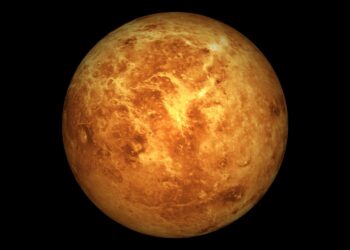
Launched in 2018, the Parker Solar Probe is a NASA mission focused on observing the Sun’s corona, zooming closer and closer to our star. The spacecraft is currently the closest object to the sun made by humans and it’s already shown us the highest resolution image of the sun, revealing insights such as the stunning solar ‘campfires‘.
When not looking at the Sun, the Parker probe is focusing on comets. On 2019 September 2, it observed the comet 322P/SOHO in its closest approach to the sun. The spacecraft detected the dust particles being ejected through 322P’s tail. In 2020, a more interesting image showed the NEOWISE comet with its double tail — the brightest comet in the northern hemisphere since. The astonishing photo of NEOWISE depicted above was made with Wide-Field Imager the instrument aboard the Solar Probe (WISPR), designed to provide images of the corona and inner heliosphere in visible light.
This time, WISPR brought us an incredible view of Venus. Parker Solar Probe is tightly intertwined with Venus, as the planet sustains the spacecraft’s orbit, and sometimes there is a good opportunity for a flyby. Scientists didn’t lose the opportunity of photographing the planet and the result was a stunning image of the Venusian surface.

The shot was taken when the spacecraft was 12,380.68 km (7,693 miles). What grabs attention first is the aura-like around the planet which makes the dark sky a little brighter. Scientists believe it is like Earth’s airglow, an emission of light caused by particles in the atmosphere. This is notoriously difficult to overcome in astronomy photography.
If you take a closer look, you will notice a darker region on the surface of the planet. This is the Aphrodite Terra, a highland area roughly as big as the African continent. It seems darker because it is cooler than the surroundings. Aphrodite Terra also features some large mountains and lava flows, which you can’t really see in this photo.
It is however possible to see streaks all around the surface, although scientists are not sure yet what they mean. There are many possibilities, they could be cosmic rays, dust reflected by sunlight or even ejected by the spacecraft itself.
The team had already taken a similar shot with the latest flyby on 2021 February 20, This time they decided to observe in the near-infrared as well. This wavelength is the one used in remote controls of your TV. It is not absorbed by dust, so will be able to see a clear image of the surface of the planet. The results will be received by the end of April, so fingers crossed for more surprising announcements from Venus.






